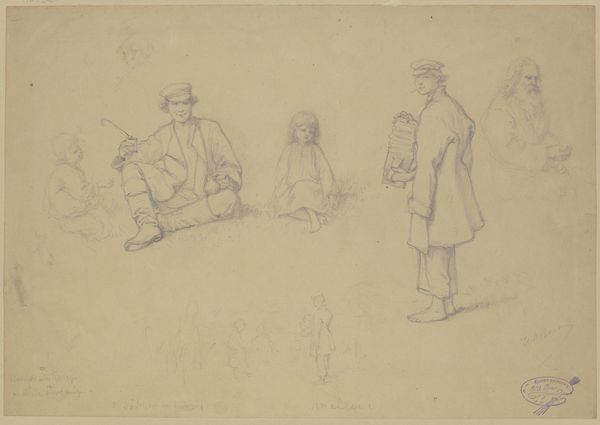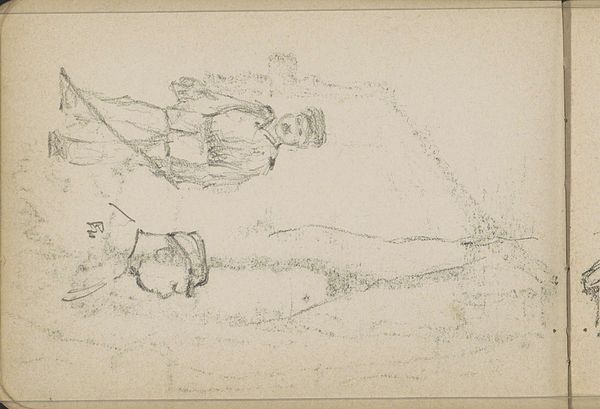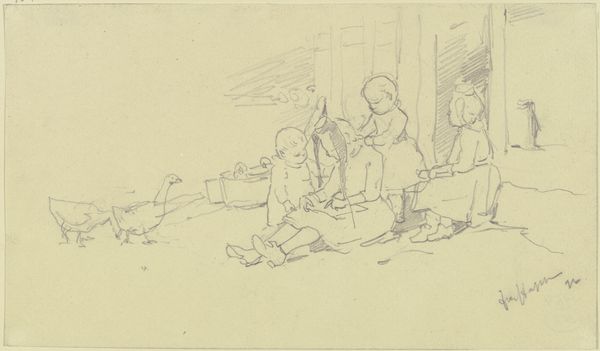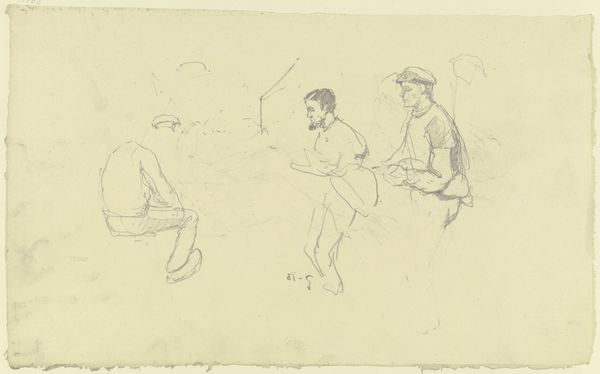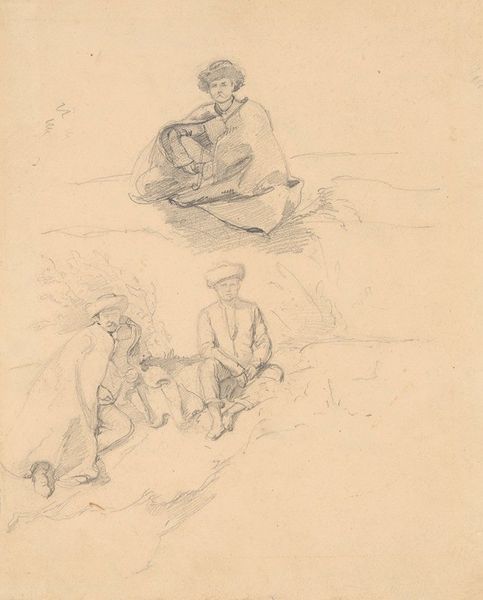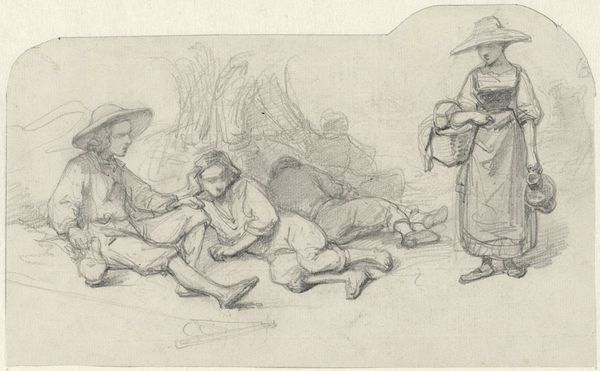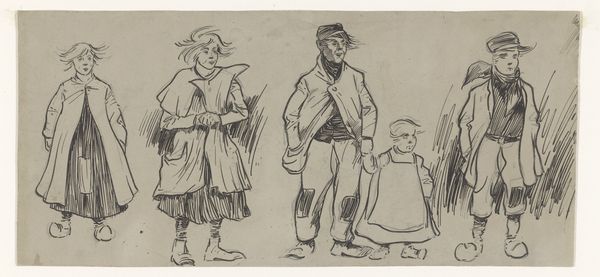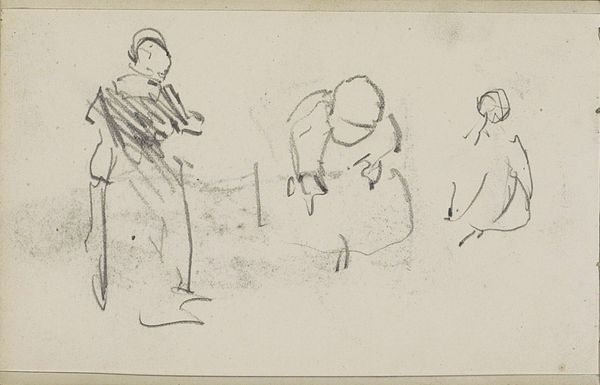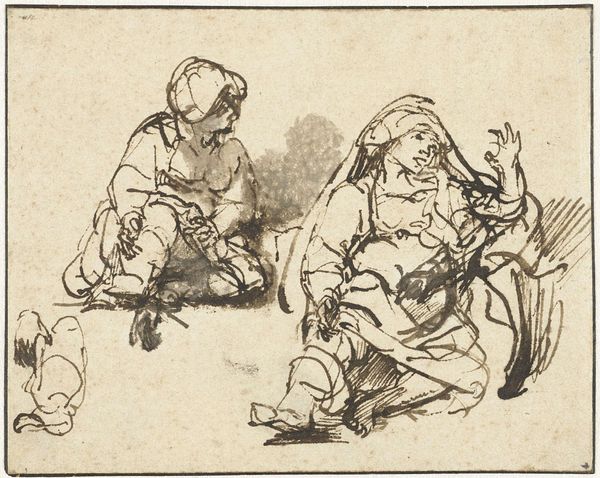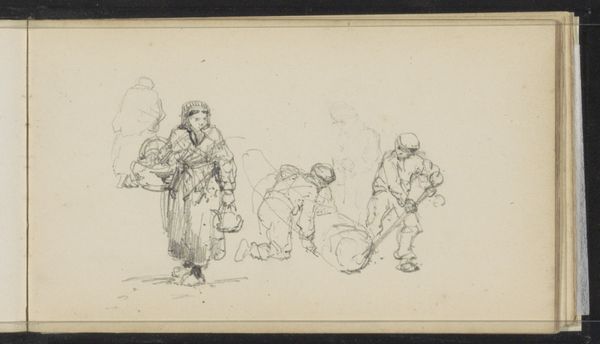
Schetsblad met twee zittende Scheveningse vissersjongens, staand een meisje ten halven lijve 1824 - 1894
0:00
0:00
charlesrochussen
Rijksmuseum
drawing, pencil
#
portrait
#
drawing
#
imaginative character sketch
#
quirky sketch
#
dutch-golden-age
#
personal sketchbook
#
idea generation sketch
#
sketchwork
#
character sketch
#
dynamic sketch
#
pencil
#
sketchbook drawing
#
genre-painting
#
storyboard and sketchbook work
#
realism
#
initial sketch
Dimensions: height 147 mm, width 189 mm
Copyright: Rijks Museum: Open Domain
Editor: This is a pencil drawing by Charles Rochussen, dating from somewhere between 1824 and 1894, titled "Schetsblad met twee zittende Scheveningse vissersjongens, staand een meisje ten halven lijve." It's currently housed in the Rijksmuseum. It feels very intimate, almost like a candid snapshot. What's your interpretation? Curator: The charm lies in the sketch-like quality, as if we're peering into the artist's notebook. What I see is a record of the artist's observations, hinting at a complex social dynamic. Rochussen captured working-class children from the fishing village of Scheveningen. We must remember the power structures at play. How were these children viewed and treated in their time? Editor: So you are saying this isn’t just a simple portrait? Curator: Exactly! It invites critical analysis, demanding that we consider the labor involved for children to sustain themselves during that era. It reflects larger socioeconomic issues of the time period and demands viewers engage critically and think beyond formal appreciation. Where are the parents of these children? Why the documentation? Editor: That's a perspective I hadn't considered. The sketch's seemingly simple nature hides a complex story. Curator: Indeed. The way they are presented gives them importance as subjects, hinting towards documentary realism. Do you notice how their placement hints at individual personalities? It’s more than a quick study. It becomes a silent protest. Editor: Now I see the layers that exist beneath the initial impression of a simple sketchbook page! Thank you for showing me what to look for in the larger historical and societal framework! Curator: Of course! It reminds us art is always in conversation with power, social norms, and hidden narratives.
Comments
No comments
Be the first to comment and join the conversation on the ultimate creative platform.

